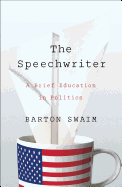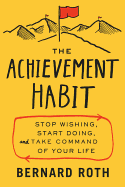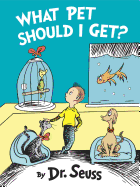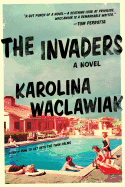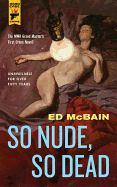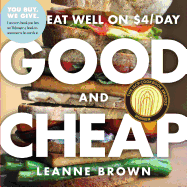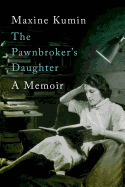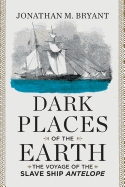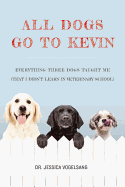Tuesday, July 28, 2015
Start with the last two books I've read. They might seem to have little in common beyond certain obvious traits--author, cover, numbered pages, blurbs, etc. At no point while reading the books, one fiction and the other nonfiction, did I see a connection. I simply followed usage directions from my lifelong prescription: Pick a book, read it, pick another. Repeat as needed. 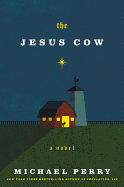 The first was Michael Perry's sharp and funny novel The Jesus Cow, in which Harley Jackson's small herd is suddenly joined by a newborn calf, "upon whose flank was borne the very image of Our Lord and Savior Jesus Christ." Harley's first reaction: "Well, that's trouble." And of course it is for the hardworking man who is just trying to save himself from "the triangular career path of many local men his age: trailer, toil and tavern."
The first was Michael Perry's sharp and funny novel The Jesus Cow, in which Harley Jackson's small herd is suddenly joined by a newborn calf, "upon whose flank was borne the very image of Our Lord and Savior Jesus Christ." Harley's first reaction: "Well, that's trouble." And of course it is for the hardworking man who is just trying to save himself from "the triangular career path of many local men his age: trailer, toil and tavern."
Then I read Boss Life by Paul Downs (to be released August 4), an intriguing account of one year (2012) in the professional and personal life of Downs, who opened his custom furniture business in 1987. There is fierce honesty here, as he chronicles the day-to-day challenges faced by a gifted craftsman who has had to learn how to be boss, small businessman, salesman, accountant and much more, with varying degrees of success.
Two excellent books I just happened to read in succession. I didn't give it much thought until last Thursday, when I saw John Green on the incomparable soccer podcast Men in Blazers. He was asked (at the 23-minute mark) about writer's block, and Green replied: "I remember complaining to my Dad when I first started writing that I couldn't get anything done and I had writer's block, and my Dad said, 'You know, coal miners don't get to get coal miner's block.' "
At this moment, I saw a thread connecting The Jesus Cow to Boss Life to me as both reader and worker. It was simply, and not so simply, their honest depiction of working lives. --Robert Gray, contributing editor
Maud's Line
by Margaret Verble
Early in the 20th century, the U.S. government assigned plots of land to American Indians displaced by Oklahoma's statehood. Maud Nail's day-to-day life on her family's allotment is consumed by guns, dirt and chickens. She cares for her men--a dangerous, unruly father, aptly named Mustard, and Lovely, her sensitive, thin-skinned brother--as well as the extended family whose allotments neighbor hers. They recently survived the flood of 1926-27 that covered Oklahoma and much of the Midwest, but the difficulties don't stop there. Margaret Verble's first novel, Maud's Line, details the year in which Maud makes several decisions that will affect the rest of her life.
In her unadorned style, below the violence and hardship on the surface of Maud's life, Verble crafts a story filled with nuance and quiet conflict. She exhibits a talent for characterization: each individual is carefully and distinctly fashioned, so that Lovely's girlfriend and the members of Maud's extended family, for example, shine brightly in even the briefest of appearances. Maud herself is finely wrought, caught between the values she's been raised with--and the people she loves--and a hope for a different life, one with electricity and hygiene in place of dust and blood. One of the greatest strengths of Verble's novel, set on her family's land allotment, is the delicate interior conflicts produced by Maud's deceptively simple life. Propelled by its own momentum, Maud's Line pulls the reader along until, amid daily privations and small tragedies, Maud has the chance for the first time to choose for herself what her future will hold. --Julia Jenkins, librarian and blogger at pagesofjulia
Discover: A young American Indian woman's existential questions and daily life on an Oklahoma farm.
The Invaders
by Karolina Waclawiak
Sometimes prison looks like a jail cell, and sometimes it looks like a million dollar beach home. For The Invaders' Cheryl, a 40-something housewife, and Teddy, her 20-something stepson, it looks like the fictional Little Neck Cove, Conn., where community tension over an influx of lower-class outsiders comes to a head during one ill-fated summer. In Believer editor Karolina Waclawiak's darkly humorous, incisive second novel, the lines in the sand define these characters' lives until the privileged few of the beachside hamlet begin to lose their country club decorum.
The chief charm of The Invaders is its wickedness, which seeps into major elements and minute details alike. The novel skewers the ensconced, incestuous community from beginning to end, name-dropping bloodlines (the local bike-riding drunk descends from President Hoover), name brands (Cheryl met her philandering husband when she worked at a Ralph Lauren outlet) and the benzodiazepines on which both Cheryl and Teddy rely. Theirs is an empty world, measured in parties everyone dreads and bodies that fail them with every new wrinkle or atrophied muscle. Why, then, are they so compelled to stay and fight?
Waclawiak (How to Get into the Twin Palms) answers this question by way of rebellion. Faced with the privatization of local beaches and the loss of Little Neck's easy charm, Cheryl and Teddy stand their shifting ground in the face of a storm both literal and metaphorical. In the midst of invasion, these two may not manage a victory, but their fight makes for a keen, transfixing read. --Linnie Greene, freelance writer
Discover: An incisive skewering of a privileged beachside community facing an "invasion" of lower-class outsiders.
Mystery & Thriller
So Nude, So Dead
by Ed McBain
In 1952, a young author published his first crime novel, The Evil Sleep!, under the name of Evan Hunter (which he then legally adopted). In 1956, he published it again as So Nude, So Dead using the name Richard Marsten. Such was the world of the pulps in the '50s. In 1986, when the Mystery Writers of America honored him as a Grand Master, readers knew him as Ed McBain, author of the 87th Precinct series. In this first novel, McBain was searching for his voice. As his maiden flight into crime fiction, the book doesn't soar but it does rise with punchy dialogue and a fast pace.
Ray Stone, a young man addicted to heroin, awakes in a seedy New York City hotel bed next to a beautiful naked woman. He notices two small bullet holes in her navel and a "dried river of red across the flatness of her stomach" that runs onto the sheet. Frantic and desperate for a hit, he grabs his now-empty wallet, wondering where his 16 ounces of pure heroin went.
Ray was once a pianist with a future but now he's on the run for a murder he didn't commit. McBain tells the story as if he's looking down at Ray scurrying about furiously trying to find his stuff. The roadblocks are all in place: mobsters, drug pushers, the cops, beautiful women and his addiction. It's a treat for fans to watch a young writer learning the craft he will soon come to master. --Tom Lavoie, former publisher
Discover: Ed McBain's very first novel is a story of addiction, murder and a kind of redemption.
Food & Wine
Good and Cheap: Eat Well on $4/Day
by Leanne Brown
Everything about Good and Cheap: Eat Well on $4/Day is admirable: its mission, the buy-one-donate-one marketing plan and, of course, the recipes.
Leanne Brown's New York University master's capstone project-turned-cookbook was driven by her commitment to offer advice and recipes to those living on a SNAP (Supplemental Nutritional Assistance Program, i.e., food stamps) budget of $4 a day. But anyone hungry for an easy, nutritious diet will find Good and Cheap a go-to cookbook. Another benefit of buying the book: for every one sold, a copy will be donated to a person in need, thanks to Brown's successful Kickstarter campaign.
"More than a book of recipes, this is a book of ideas." Brown introduces a novice cook to equipment, pantry basics and versatile spices, with advice on shopping for maximum value and freshness. And for an experienced cook, or one in a rut, her creative recipes are a welcome revitalized approach. Bored with breakfast? Try one of Brown's seven ways to jazz up oatmeal, for example.
Brown is not "slavish to the bottom line." She cooks with butter and suggests buying expensive eggs, both worth it for their flavor. While there is an emphasis on fruits and vegetables, this is not a vegetarian cookbook. Brown avoids meat, but doesn't eliminate it; she includes Half-Veggie Burgers, combining ground meat and lentils.
Each recipe has a price-per-serving notation. "Leftovers" champions the creative repurposing of remainders from the book's recipes, and sidebars offer friendly tips that encourage the cook to be confident and "conjure deliciousness in any kitchen, anytime." --Cheryl Krocker McKeon, manager, Book Passage, San Francisco
Discover: A cookbook with inexpensive and nutritious recipes, designed for those limited to shopping on $4 a day but with appeal to any cook.
Biography & Memoir
The Speechwriter: A Brief Education in Politics
by Barton Swaim
Mention the name of former South Carolina Governor Mark Sanford and there's at least a fair chance the response will be, "hiking the Appalachian Trail," a reference to the feeble story his aides offered to cover up Sanford's secret trip to Argentina to visit his mistress in June 2009. Barton Swaim's memoir of the nearly four years he spent as one of Sanford's beleaguered speechwriters during that time is a candid, witty look inside the world of high-stakes politics.
Like his predecessors, Swaim's early success with Sanford was followed almost immediately by the discovery that his boss was a petty tyrant when it came to the demands he placed on his overworked and underpaid staff. As miserable as Swaim was in his futile effort to craft eloquent words for a man who had "no knowledge of your personhood," and for all his bitterness over the mistreatment he endured, Swaim is a wounded idealist, not a cynic. "He was everything a politician should be--a politician in the best sense of that word, if it has a best sense," he writes of Sanford in the book's concluding chapter.
The account of Sanford's romantic misadventure is entitled "The Fall." That title doesn't refer to a season of the year, but instead to the way Sanford immolated his political prospects, at a time when hints were being dropped about a possible place on a Republican national ticket.
In 2013, Mark Sanford overcame his embarrassment to win re-election to his old seat in Congress. When he went about selecting his Washington staff, it's doubtful he considered hiring Barton Swaim. That's Sanford's loss. --Harvey Freedenberg, attorney and freelance reviewer
Discover: A humorous and sobering glimpse inside the modern political crucible.
Wondering Who You Are: A Memoir
by Sonya Lea
When Sonya Lea's husband, Richard, had surgery to treat his rare appendiceal cancer, they knew there were risks. But they had not considered that Richard would wake up with no memory of his 23 years of marriage and two young adult children, or of his own personality and past. Sonya considers their shared history and difficult recovery in her memoir, Wondering Who You Are.
The details of Richard's medical story are inarguably painful but often sweet. Sonya's changed husband is empathetic, guileless and highly motivated to learn. Alternating chapters cover the trauma of his surgery and aftermath, and the story of their teenage romance and decades of marriage, until the timelines merge into one: Sonya's quest for the husband she lost and her eventual acceptance of the one she's found. This powerful, gut-wrenching narrative negotiates spirituality, hope and despair, sexual experimentation and a dedicated caregiver's tireless research and advocacy. Sonya and Richard's family story wanders geographically as well, from Kentucky to Ontario, Banff, Memphis, Seattle, California, France, India and more. Through assorted, arduous adventures, they learn again to rely on one another, to persist and to accept.
Sonya Lea is a fascinating narrator, by turns vulnerable and fierce, patient and maddened, always devoted. Her writing is contemplative and lovely, and contains just enough scientific detail. The result is a lyrical, intensely candid meditation on memory, identity and the stories we create for ourselves--and a love letter to both the new and old versions of Richard. --Julia Jenkins, librarian and blogger at pagesofjulia
Discover: A woman's thoughtful account of life after her husband's traumatic brain injury.
The Pawnbroker's Daughter: A Memoir
by Maxine Kumin
Author of five novels, eight prose collections and 18 books of poetry, including the Pulitzer Prize-winning Up Country, Maxine Kumin (1925-2014) explains how she became a feminist and poet in her short but succinct memoir, The Pawnbroker's Daughter. Her father, a Russian Jew, owned the largest pawnshop in Philadelphia in the 1930s and advertised his business on the free matchbooks given out with the sale of cigarette packs. Her mother was a proud German Jew, embarrassed by her husband's profession, and Kumin learned to tell people her father was a "broker" or "merchant," knowing the word would probably be interpreted as "stockbroker."
While at Radcliffe College during World War II, she met her future husband, Victor, on a blind date; a soldier/scientist, he was sent to Los Alamos to work on the top-secret development of the atomic bomb. Once the war was over, the couple bought a small farm in New Hampshire, and Kumin's poetry career took off. She tells of life on the farm, and shows how its elements worked their way into the many volumes that she produced.
It is through her poetry that her brilliance shines and makes this memoir so worthy. She shows how her childhood and loves influenced her, but her thoughts on being an adult who lived and worked the land and witnessed the good and evil in the world as it unfolded around her are most memorable. Often readers wonder what inspires a poet to write the way she does; readers of The Pawnbroker's Daughter will see firsthand what made Maxine Kumin tick. --Lee E. Cart, freelance writer and book reviewer
Discover: Maxine Kumin tells about her life and how it influenced her writing.
History
Dark Places of the Earth: The Voyage of the Slave Ship Antelope
by Jonathan M. Bryant
Thanks to Steven Spielberg's movie Amistad, many today are familiar with this aspect of early America's slave trade; John Quincy Adams's argument before the Supreme Court freed the slaves of the Amistad. However, there was an earlier case dealing with a slave ship that helped decide the Amistad case. Jonathan M. Bryant's Dark Places of the Earth is about that case, "one of the most dramatic, important, and unjustly forgotten stories from slavery's traffic history."
In 1820, the Spanish ship Antelope, carrying nearly 300 African slaves--many of them children and teenagers--was seized by the U.S. Revenue Cutter Service near Florida. Slavery was legal in much of the United States, but the Atlantic slave trade was not. Courts would need to determine if these Africans were slaves and, if they were, to whom they belonged.
Bryant (How Curious a Land) traces the history of the ship as it changed hands many times. He then recounts the slaves' experiences in Savannah, Ga., as courts took up their plight while some began dying from plantation work and disease. He meticulously unwinds the years-long, complex legal history that finally led to the case being heard by the six justices of John Marshall's Supreme Court, four of whom were slave owners. Arguing for the slaves' freedom was Francis Scott Key, a great lawyer and superb speaker; the courtroom battle took five days. From the West African shores to Georgia, Washington, D.C., and, finally Liberia, Bryant's riveting history of this case and these slaves is a remarkable one. --Tom Lavoie, former publisher
Discover: An absorbing story of one ship involved in the American slave trade.
Business & Economics
The Achievement Habit: Stop Wishing, Start Doing, and Take Command of Your Life
by Bernard Roth
Rarely can the audience for a book be accurately described as "everyone, at every age and stage of life"--but this is true for The Achievement Habit by Bernard Roth (professor of engineering and the co-founder and academic director of Stanford University's design school). Having taught for 52 years, Roth is a gifted instructor sharing what he has learned about how to create a life with meaning. His primary recommendation is to stop trying (which requires force) and instead take action (which is empowering). Roth then provides concrete examples and exercises for accomplishing any goal in any area of life.
In the spirit of Stanford's d.school, Roth challenges readers' assumptions in order to reveal hidden possibilities. He believes that achievement "can be learned. It is a muscle, and once you learn to flex it, there's no end to what you can accomplish in life." He encourages readers to escape limiting excuses and become "doers" by changing our language (moving from "but" to "and"), building resiliency (by reframing setbacks), focusing on the present moment, collaborating with others and learning from personal experiences. He recommends continually asking the questions "Who am I?" "What do I want?" and "What is my purpose?" and allowing the answers (which will change over time) to dictate our intention and then attention. By reframing problems into opportunities for growth, he believes true success is inevitable. While many of these ideas are not new, Roth's method for achieving them is fresh and applicable for all ages. --Kristen Galles from Book Club Classics
Discover: How to create a fulfilling life through action, intention and attention.
Pets
All Dogs Go to Kevin: Everything Three Dogs Taught Me (That I Didn't Learn in Veterinary School)
by Jessica Vogelsang
Dr. Jessica Vogelsang's memoir begins with a dedication, "To the misfits, the miscreants... and socially inept, and the dogs who love them" and ends with a promise, "I can honor [my dogs] by striving just a little more to live like they did: with joy, unabashed and open, reminding myself and others that our flaws do not make us less, but ever more worthy of being loved just the way we are."
The opening scene introduces the titular Kevin, a dear friend of the author from college who has recently died at the age of 40. The memoir then flashes back 30 years and is organized into three parts according to the family dog at the time: Vogelsang's childhood Lhasa apso, Taffy ("one of those sweet fuzzy faces people found irresistible--and the temperament of a senior with a bad prostate"), the first retriever welcomed into her adult life, Emmett (who "seemed to view himself as a Dickensian ragamuffin, a street urchin who needed to rely on his street smarts for survival"), and the Lab, Kekoa ("She lived in a constant state of extreme remorse, when she was perfectly content"). Each dog provides quiet wisdom and support as Dr. Vogelsang navigates the trials of adolescence, the challenges of vet school, the angst of postpartum depression and eventually the loss of Kevin (comforted by the thought that all of her past dogs are in the same place as her friend). The many humorous stories of Dr. Vogelsang's patients and their guardians ensure that laughs far outweigh the tears. --Kristen Galles from Book Club Classics
Discover: Dr. Jessica Vogelsang's appreciation of dogs for being beaming, happy balls of energy intent on living in the present.
Children's & Young Adult
What Pet Should I Get?
by Dr. Seuss
The siblings from One Fish, Two Fish, Red Fish, Blue Fish return for a triumphant trip to the pet store in this newly discovered manuscript from the treasure troves of Dr. Seuss.
Instead of fish that have "a little star" or fish that drive "a little car," the denizens of the pet store that the boy narrator and his sister Kay visit include more realistic offerings: "a fine dog who shook hands," a cat that Kay pats, and a pup and kitten. Seuss goes to town with the phrase "Make up your mind," which appears on banners held by fantastical creatures with long necks, wings, hoofs and horns. After all, Dad will let them choose only one. "Oh, boy!/ It is something/ to make a mind up," writes Seuss. A palette of lemon yellow for the siblings' sweaters and teal planes of color that call to mind The Cat in the Hat's backdrops unite this addition with Seuss's previous works. Not to mention his signature rhyme scheme and scan--"It may be a fish/ is the pet that we wish!"-- and the riff on "But how could I make up/ that mind in my head?" Some more exotic pets make the choices even harder and link the themes back to the outrageous creatures of One Fish, Two Fish.
Seuss ends on a high note (" 'I will do it right now./ I will do it!' I said./ 'I will make up the mind/ that is up in my head' ") and lets readers decide what the children purchased at the pet store. --Jennifer M. Brown, children's editor, Shelf Awareness
Discover: A long-lost manuscript by Dr. Seuss stars the sibling duo from One Fish, Two Fish.
Birdie's First Day of School
by Sujean Rim, illus. by Sujean Rim
Birdie expresses all the worries that can accompany the prospect of starting school, and shows how to get through them in this warmhearted picture book.
The heroine always knows what to wear. But the night before school starts, Birdie can't sleep. In the morning, she can't decide what to wear. And Monster, her little white dog, doesn't help. Sujean Rim uses her watercolors, colored pencils and collage to create clothes and accessories combinations to make a Vogue editor envious. But even after choosing "just the right outfit," Birdie's not confident that she's "really ready for school." She reviews the good and bad things she's heard about it and confesses to Mommy that she's scared. Her mother reassures Birdie, fastening a necklace with a heart locket around her daughter's neck and telling Birdie that "No matter where you are, no matter where you go, Monster and I are always right here." Rim's collage artwork depicts a "beautiful" and orderly classroom where "everything had its place--even Birdie!" She has a cubbie with her name on it and a kind teacher named Mr. Bobbins. Rim takes readers through Birdie's day, and helps preview what youngsters can expect (including a "delicious" lunch). Afterward, Birdie tells Mommy and Monster all about her day.
Rim portrays a close-knit mother-daughter relationship that also allows room for Birdie to strike out on her own. The heroine evinces a healthy independence while also reassuring novice students that it's okay to miss their parents and that they'll still be there when school is over. --Jennifer M. Brown, children's editor, Shelf Awareness
Discover: Birdie takes youngsters through her first school day in style.
| Advertisement Meet belle bear! |


